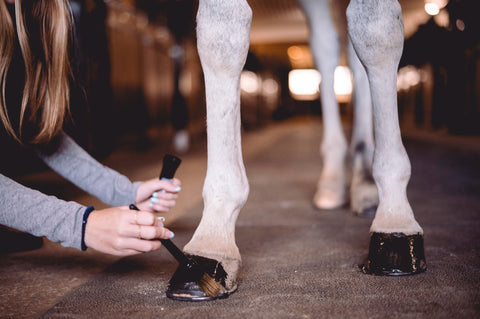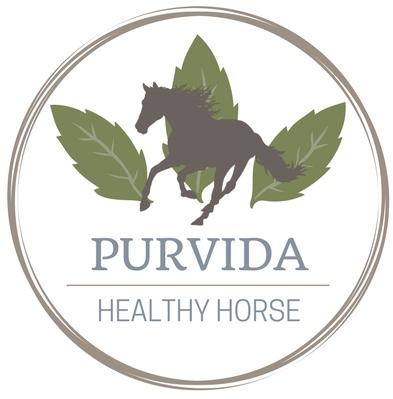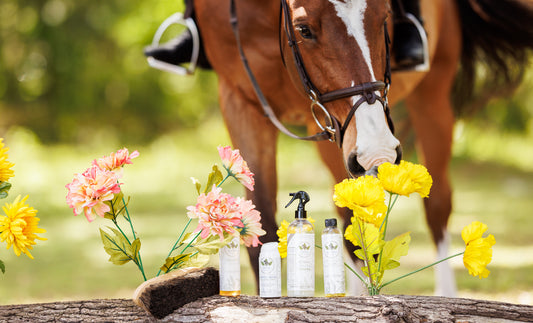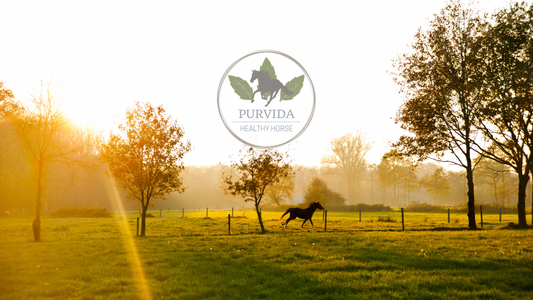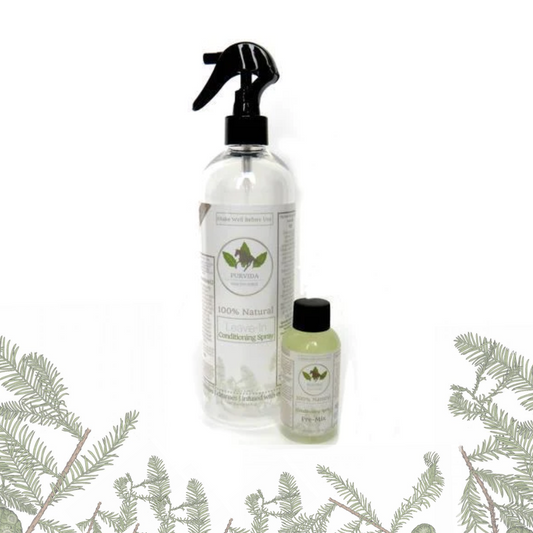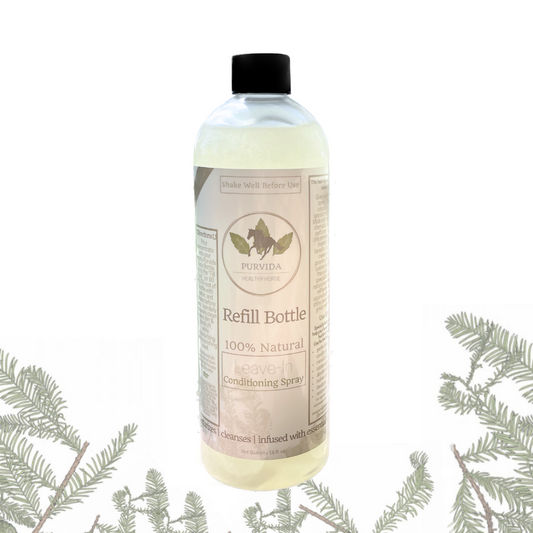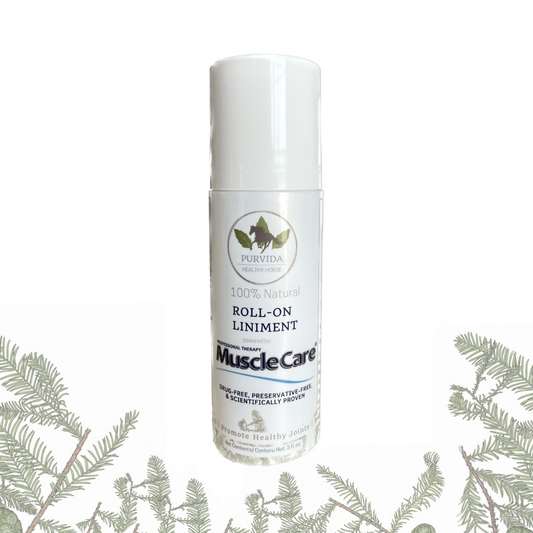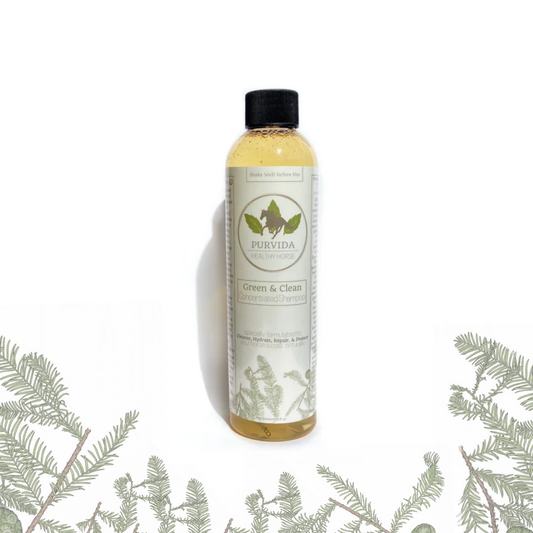Summertime can be one of the trickiest times of year to manage and keep your horse's hooves healthy, but we checked in with farrier, Matt Cogan, for his advice on how to keep your horse’s hooves looking their best.
During the hot summer months, a solid, healthy hoof can be more difficult to maintain, mostly due either overly damp or overly dry conditions. The most important factors to consider to keep hooves healthy are:
-
Proper nutrition
-
Sanitary & dry living conditions
-
Regular trimming & shoeing
-
Managing moisture
Horse hoof health is determined by several factors including genetics, environment, and nutrition. While some horses inherit weak hooves, and that can't be changed, proper care and nutrition can help a horse develop and maintain the best hooves genetically possible.

Nutrition impacts everything from performance and temperament to growth and metabolic rate, and hoof quality is no exception. A well-balanced diet will contain the nutritional elements needed for optimal hoof growth, but it's important to note each horse is unique - different life stages, performance levels, and lifestyles can affect each situation. Here are some key nutrients and their impacts on keeping hooves healthy:
- Protein: The hoof structure is primarily made of keratin, a protein. Proteins are made of amino acids and are necessary for healthy horse hooves and growth.
- Fat: A diet with adequate levels of fat can be beneficial to the hoof. Fats create a permeability barrier, helping to prevent bacteria and fungi from entering the hoof.
- Zinc: Zinc is a necessary element in order for keratin to be formed in the hoof. Research has shown horses with insufficient hoof strength had less zinc in the hoof wall than horses with healthy, undamaged feet.
- Calcium and phosphorous: We all know the association between calcium and strong bones, but calcium is also essential for proper cell attachment in the hoof. In order for this calcium to be properly utilized by the body, it also requires phosphorous. However, it's important to note that you must always supply calcium in a higher amount than phosphorus, no matter what the species. The reason for this is that phosphorus will bind up calcium in the animal, making calcium unavailable for use in bones, teeth, and other areas it is needed for. If there is more phosphorus than calcium available to the horse, then the phosphorus will start to pull calcium away from wherever in the body it can, including the all-important bone structure, leading to weak, abnormal bones.
- Selenium & Vitamin E: Selenium and vitamin E are important antioxidants protecting cell membranes. Selenium deficiency can cause cracked horse hooves or thin hoof walls in horses with poor quality hooves. However, the balance of intake is crucial because too much of it can cause selenium toxicity, resulting in hair loss, coronitis and coronary band bleeding, as well as sloughing of the hoof and laminitis.
- Biotin: Perhaps the most-researched vitamin for hoof growth, biotin is thought to help with hoof integrity, coat, mane and tail growth. Studies have reported varying effects, but horses with poor hoof quality despite a balanced diet and favorable environment might benefit from a therapeutic dose of biotin.
As in most things we do, hygiene should be a priority, and in hoof care this is no exception. Sanitary & dry living conditions can make all the difference in the quality of your horse's feet. Moisture is really the true enemy when it comes to keeping hooves healthy, and majority of your problems are going to stem from exposure to damp, muddy conditions. A hoof that is constantly exposed to high moisture levels becomes increasingly soft and weak. The sole tends to flatten out and the hoof is no longer capable of properly supporting the weight of horse and rider. Soft feet can lead to lameness, particularly when a horse is asked to work on hard surfaces or is being exercised rigorously. Hooves that are continuously wet are also more porous and therefore more prone to bacterial and fungal infections. Soft hooves tend to develop deep cracks, chipped areas and flat soles that provide access for bacteria and fungus to invade. The sole of the hoof, which is the most porous section of the foot, is particularly susceptible to disease. Problems arise when hooves can't properly dry out, so in rainy or humid climates, it's necessary to provide horses with a way to stand on dry footing. Keeping stalls clean, providing absorbent bedding, and regularly picking out your horse's feet can all assist in keeping hooves healthy.
Maintaining a consistent and regular trimming & shoeing schedule is also imperative to keeping your horse's hooves healthy. By scheduling regular farrier visits, you're able to identify potential issues earlier, and maintain the ideal shape of your horse's foot. Horses with balanced hooves move better and have less stress and strain on bones, tendons and ligaments. In the summertime, hooves should be trimmed and/or shod at least every 6 to 8 weeks, and it might need to be even more frequent than this, depending on the level of work your horse is in and the speed at which their hooves grow.

Managing moisture is also important to preventing issues with your horse's hooves, but it's a balancing act: not enough moisture results in dry, brittle hooves, and too much moisture can cause the hooves to be overly soft. In the summertime, when conditions are usually too dry overall, or constantly changing from wet to dry, it's easy for your horse to develop cracks in their hooves. If you notice your horse's feet are looking cracked or brittle, moisturizing their hooves with a quality hoof oil, like the Purvida Polish Hoof Oil, can go a long way. Our hoof oil is made with avocado oil to hydrate the entire hoof without softening the hoof wall, and also promotes collagen production at the coronary band. This not only helps prevent and repair cracks and chips, but helps keep the hooves healthy and flexible; facilitating hoof expansion and contraction on movement, which is an essential part of a healthy hoof and helps to absorb some of the concussion that might otherwise be transmitted up the leg. Deep cracks, chipped areas and flat soles also provide access for bacteria and fungus to invade, causing issues like thrush and white line disease. The sole of the hoof, which is the most porous section of the foot, is particularly susceptible to developing issues. Tea tree oil, a powerful antibacterial found in our hoof oil is a great tool to kill bacteria that may have entered the hoof in old nail holes or through cracks in the hoof, sole, or frog.
Bonus Tip: Turn-out time
Turnout in the summer can be tough with respect to keeping hooves healthy. During the hottest times of the year, it can be much more comfortable for your horse to be on an evening turn-out schedule. However, constant exposure to dew can hinder hoof health. On the other hand, if they go out during the day, horses can develop cracks and chips from stomping at flies. If your horse is especially susceptible to hoof issues in the summertime, Matt also recommends that you consider the time of day that they get turned out and adjust your hoof care strategy accordingly.
If your horse is on daytime turn-out: using a quality fly repelling product like our All-In-One Grooming Spray can make a significant difference in the number of flies your horse needs to stomp at during the day. You can also apply our Purvida Polish Hoof Oil when they return to their stall to replenish moisture overnight and prevent cracks & chips from worsening.
If your horse is on evening turn-out: you can manage moisture absorption into your horse's hooves by applying Purvida Polish Hoof Oil to the bottom 2/3 of their hooves before you turn them out. The beeswax found in our hoof oil provides an effective, protective barrier from muddy, damp conditions, while still allowing the hoof to breathe and perform its normal functions.
